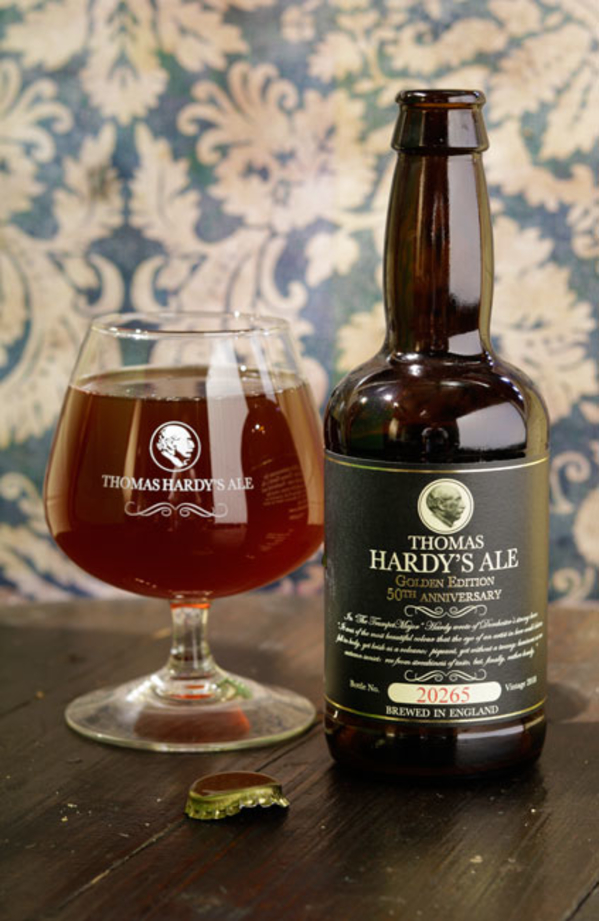How live beers came back from the dead
Added: Monday, February 18th 2019

Twenty years ago sales of bottled beer were falling off the cliff. There’s been a remarkable revival since then and as a result there’s unprecedented interest in the sector known as BCAs – bottle-conditioned ales – which will receive a major boost this year.
The national brewer Marston’s, which now produces the great Burton pale ale Pedigree in live bottled form, will stage a special promotion for BCAs in conjunction with several other producers, including Fuller’s, Moor Beer and St Austell.
The central theme of the promotion will be that BCAs age and improve due to the action of yeast and proteins in the beers, which are neither filtered nor pasteurised. In short, they are the vintage wines of the beer world.
Some of the most fascinating beers I have tasted over the years have been BCAs. In November I received the latest vintage of Thomas Hardy’s Ale, known as the Gold Edition as it marks 50 years since it was first brewed in 1968 for a literary festival in Hardy’s home town of Dorchester.
The beer has led a peripatetic existence since that first beer was launched. When the original brewery, Eldridge Pope, closed production moved to O’Hanlon’s in Devon before ending up owned by an Italian beer importer that has the beer brewed by Meantime in London.
It’s claimed the 13 per cent beer will stay in drinkable condition for 25 years though I’ve never had the fortitude to keep one that long. But there’s no doubt such strong beers will survive for lengthy periods. Thomas Hardy’s Ale is available online from www.laithwaites.co.uk.
A few years ago, a former Bass brewer in Burton-on-Trent called Roger Putnam gave me a few bottles of Worthington’s White Shield he had brewed back in the 1980s. The caps on the bottles were rusty and I thought the beers must have long since oxidised and become undrinkable.
But when I lifted the cap on one there was hiss of carbon dioxide and the beer poured a clear deep bronze colour. It was darker than a young version and the hops were less in evidence but the beer tasted superb.
I was also present at a rare tasting in Burton-on-Trent 2011 when bottles of Arctic Ale were discovered in the cellars of the old Allsopps Brewery. The beer had been brewed in 1875 for an expedition to find ships that earlier that century had attempted to map the North-west Passage from the Atlantic to the Pacific. Ships and crew had been lost and Queen Victoria insisted the sailors in the second expedition should have strong beer to ward off scurvy.
The beers were thought to be around 13 per cent alcohol and the bottles had driven corks. Steve Wellington, the veteran brewer who ran the William Worthington Brewery in the National Heritage Centre in Burton, had a special corkscrew for the job. As the cork was slowly drawn, it started to disintegrate and Steve thought the beer might have oxidised.
Miraculously, it had survived and a small group of us sampled the contents of the bottle. It was dark amber in colour and had an astonishingly complex aroma and palate of chocolate, cocoa, molasses, vinous fruit with a faint hint of hops, followed by a long bittersweet finish. It sent a shiver down my spine, not only of pleasure but also with reverence for a beer that it had been brewed close to 140 years earlier and was still in drinkable condition.
The 2018 edition of Fuller’s Vintage Ale, launched in November, marks the 22nd vintage and is another beer that will develop and improve with time. Each edition uses different malts and hops but they must always be drawn from this country. 2018 is brewed with Maris Otter pale malt and crystal malt with a fine choice of hops: Challenger, Ernest, Goldings, Northdown, Olicana and Target.
My advice would be to buy two bottles and keep one in a cool, dark place for a few years and avoid temptation.
•First published in BEER, spring 2019.








